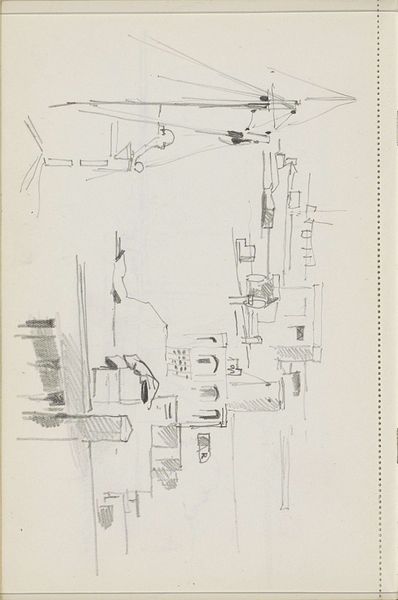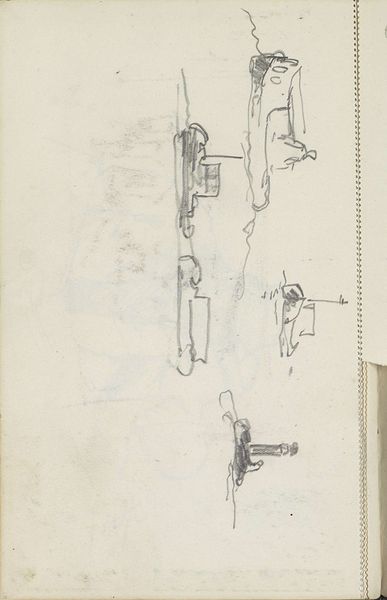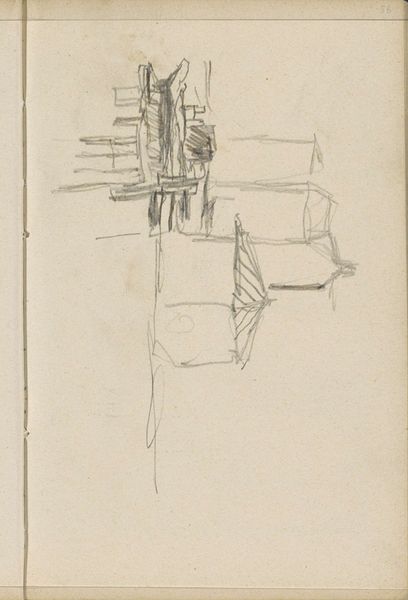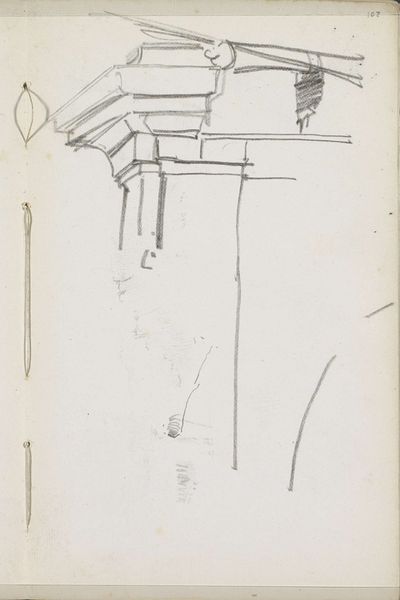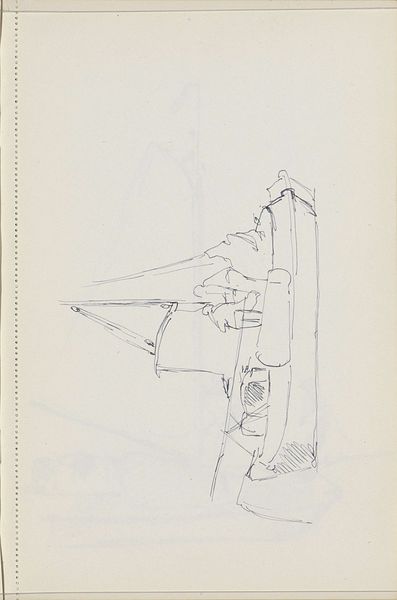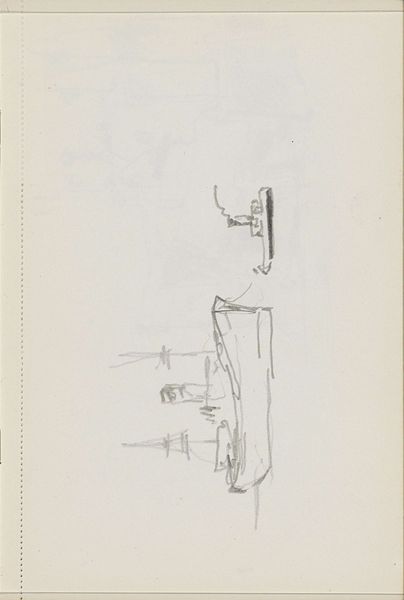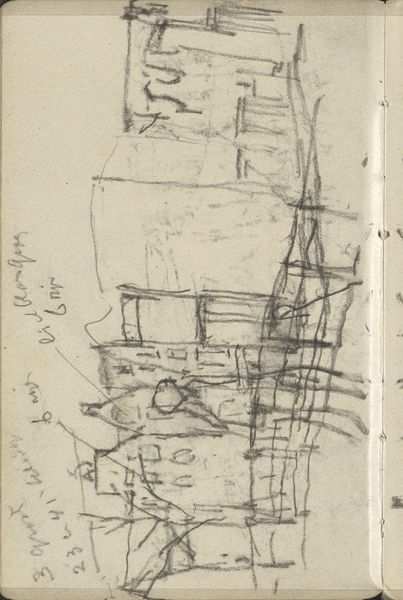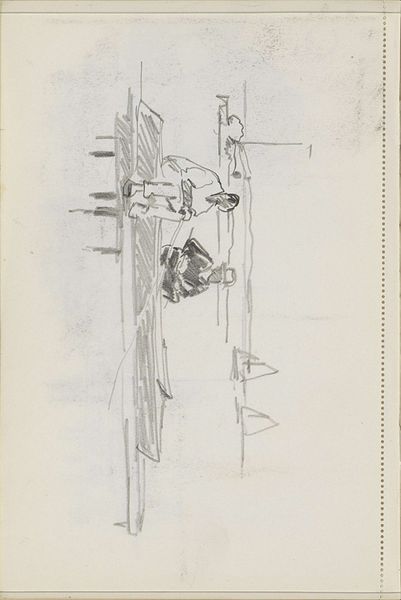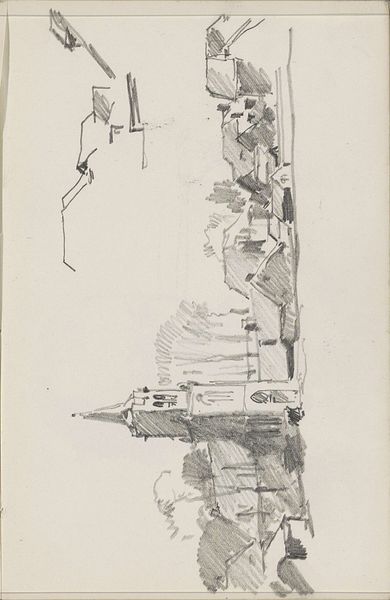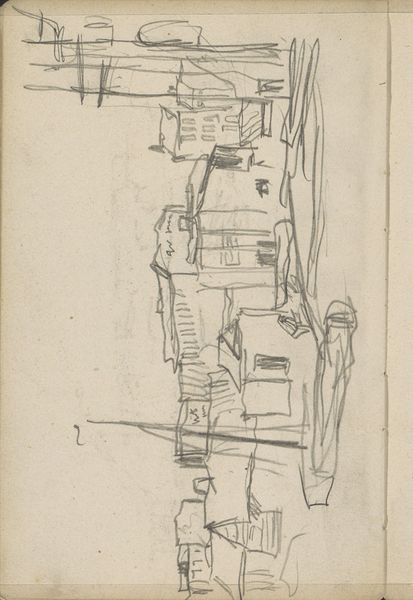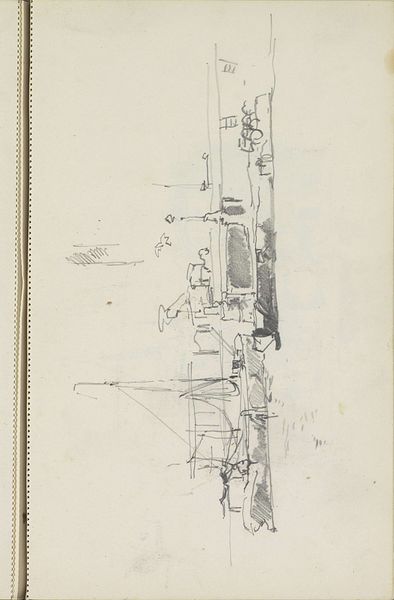
drawing, paper, graphite
#
drawing
#
landscape
#
paper
#
graphite
Copyright: Rijks Museum: Open Domain
Curator: Welcome. Before us hangs "Twee zeilboten bij een steiger" which translates to "Two Sailboats by a Pier". Created by Cornelis Vreedenburgh sometime between 1890 and 1946. It is graphite on paper. Editor: It feels very unfinished. Sparse lines sketch out the boats and pier but give a surprisingly effective impression of light on water, I find it very restful. Curator: I think that impression speaks to the historical context, really. Vreedenburgh captured the everyday life and landscapes around him, emphasizing, in many cases, the rapid changes urbanization and industrialization were bringing to Dutch society and these less-defined landscapes reflect those changes perhaps better. Editor: Interesting, yes. It is just a sketch but the use of graphite allows a good tonal range, it isn’t simply about lines, it’s about weight and shadow too. I wonder where he made it. Was this an outdoor sketch done quickly? Curator: Likely so. Consider that it provides valuable insight into Vreedenburgh’s working methods and the tradition of plein air painting. Capturing a scene on the spot was crucial for artists wanting to depict modern life. Editor: And the pier is not just any structure but is built, a testament to human skill… This invites us to consider not just the pretty boats, but the industry, the infrastructure that supports that leisure. Curator: Precisely. And it makes you wonder if the rapid urbanization brought a sense of loss with it and were Vreedenburgh’s drawings were, in part, a reaction to preserve certain Dutch vistas and traditions. Editor: Yes, looking again, one might almost see this as an early experiment in capturing a fleeting moment—perhaps an artist testing tools for rendering shadow using a specific medium like graphite, thinking on the run? It looks quite ephemeral. Curator: These simple scenes reveal hidden facets of our relationship with water, boats, labor, and a transforming landscape. It’s a reminder that art, even in its most intimate form, reflects broader societal concerns. Editor: For me it makes the point that "art" isn’t only found in final polished objects but even in quick notations of the everyday. It's an intriguing, small artifact!
Comments
No comments
Be the first to comment and join the conversation on the ultimate creative platform.
